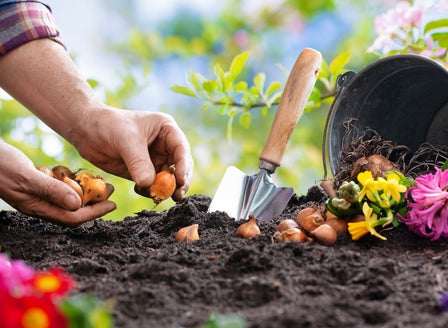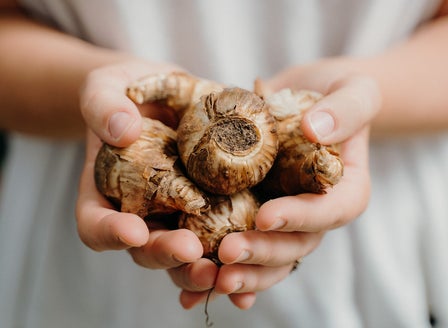Also known as the Persian Buttercup, Ranunculus make a stunning show with their Peony like flowers that come in a vast array of bright striking colours. They make a fantastic addition to the flower garden and look great in containers, brightening up any entrance or courtyard.
Planting Calendar
Ranunculus are available instore during Summer and Autumn. Early planting will provide flowers during mid-late winter, planting after this time will produce flowers in mid Spring
Prepare
Position
Ranunculus prefer to be planted in partial shade to full sun. They can be grown in garden beds or containers and will even grow happily under deciduous trees as they will have access to full sun in late winter to mid-spring.
Soil
Ranunculus corms like a fertile but free draining soil. If drainage is an issue plant into containers using Kings Potting Mix or in a raised bed.
Plant
Before planting soak your corms in water for 2 hours. Ranunculus corms have pointed claws which should be planted face down into the soil. Loosen soil so that it is at a depth of 10-15cm, gently push the corms (claws down) with your finger into the soil to a depth of 4cm. Gently cover with soil and water in well with Aquaticus Garden Booster.
Care
Watering
Soak weekly after planting until growth shoots are seen, then water to keep them just moist, not wet.
Feeding
Apply Kings Slow Release Bulb Food when first planting and once again after the first signs of growth. For a natural option apply Kings Sheep Pellets when planting and feed with Aquaticus Organic Garden Booster once they start to grow reapplying monthly.
Protecting
Slugs and snails are prone to eating new growth so protect with Tui Quash.
Spraying
Mildew can be an issue in more humid environments, spray with Yates Super Shield as per instructions for prevention rather than cure. Avoid wetting leaves when watering.
General Care
Allow the foliage to die back naturally. Bulbs draw the nutrients from the leaves and store them for next season. Removing the leaves too early may result in poor quality flowering the following year. Most bulbs can be left in the ground for many years, and don’t need to be lifted unless they become overcrowded or if they need extra winter chilling. If you wish to lift your bulbs, you can do so in late spring and store them in a cool, dry and dark place. Dust the bulbs with Flowers of Sulphur to reduce the chance of fungal problems.
Beginner Tip
When using sprays, chemicals or fertilisers always read the label and follow the instructions. Apply sprays in the evening to avoid harming beneficial insects.
Expert Tip
It is recommended to place Ranunculus bulbs into a paper bag in the fridge for 3-5 weeks. This gives them a chill and sets them off to flower when the temperature gets warmer.
Tip
Bulbs that are planted in partial shade will have longer flower stems for picking.
Frequently Asked Questions
What kind of soil do Ranunculus prefer?
Ranunculus corms like a fertile but free draining soil. If drainage is an issue plant into containers using Kings Potting Mix or in a raised bed.
How often should I water Ranunculus?
Soak weekly after planting until growth shoots are seen, then water to keep them just moist, not wet.
Can Ranunculus be grown in pots?
Ranunculus can be successfully grown in pots. Use a well-draining potting mix and ensure the pot has good drainage holes. Place the pot in a sunny location and water regularly.
When do Ranunculus bloom in Auckland?
Ranunculus typically bloom in Auckland from late winter to early spring, usually from August to October, depending on the planting time and weather conditions.
Can I grow Ranunculus indoors?
While Ranunculus can be grown indoors, they generally do better outdoors due to their need for full sun. If growing indoors, place them in a bright, sunny window and ensure they get plenty of light. Keep the soil moist but not waterlogged and provide good air circulation.

